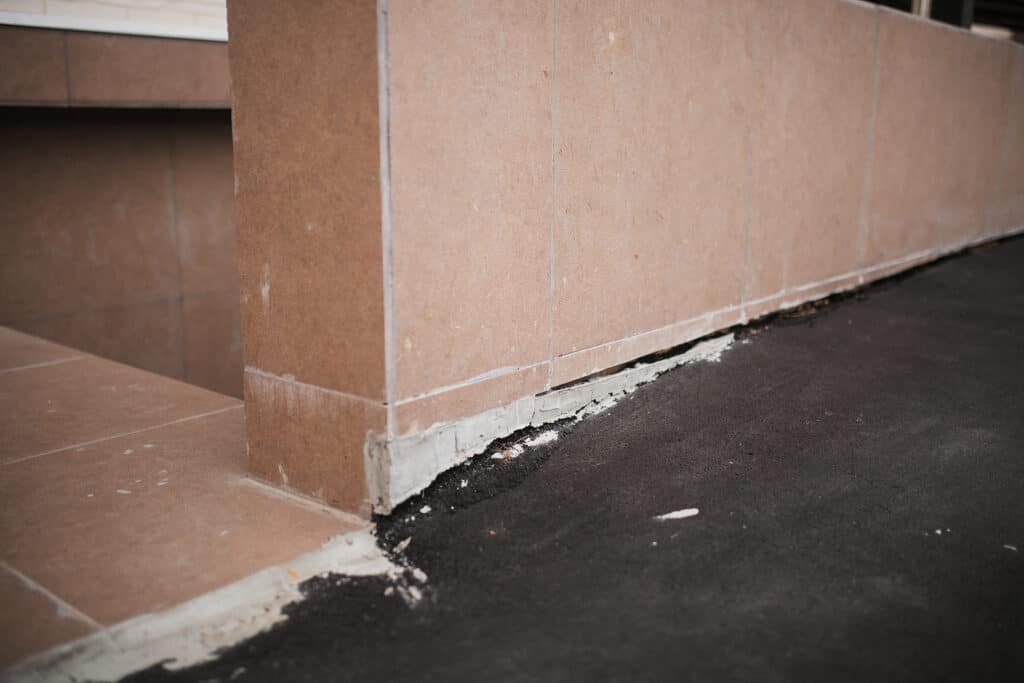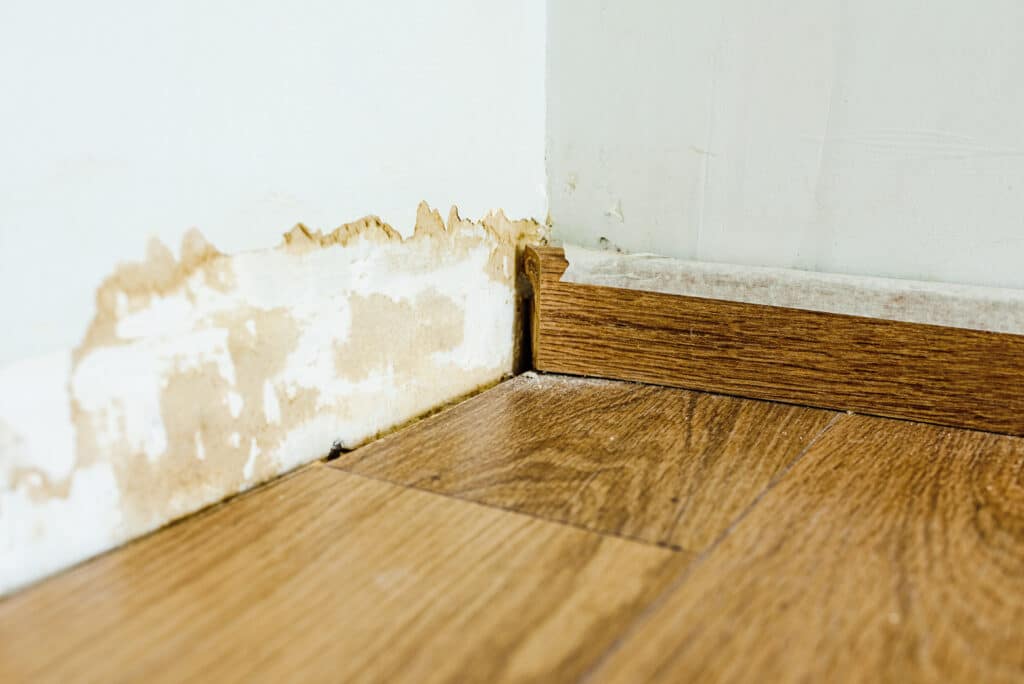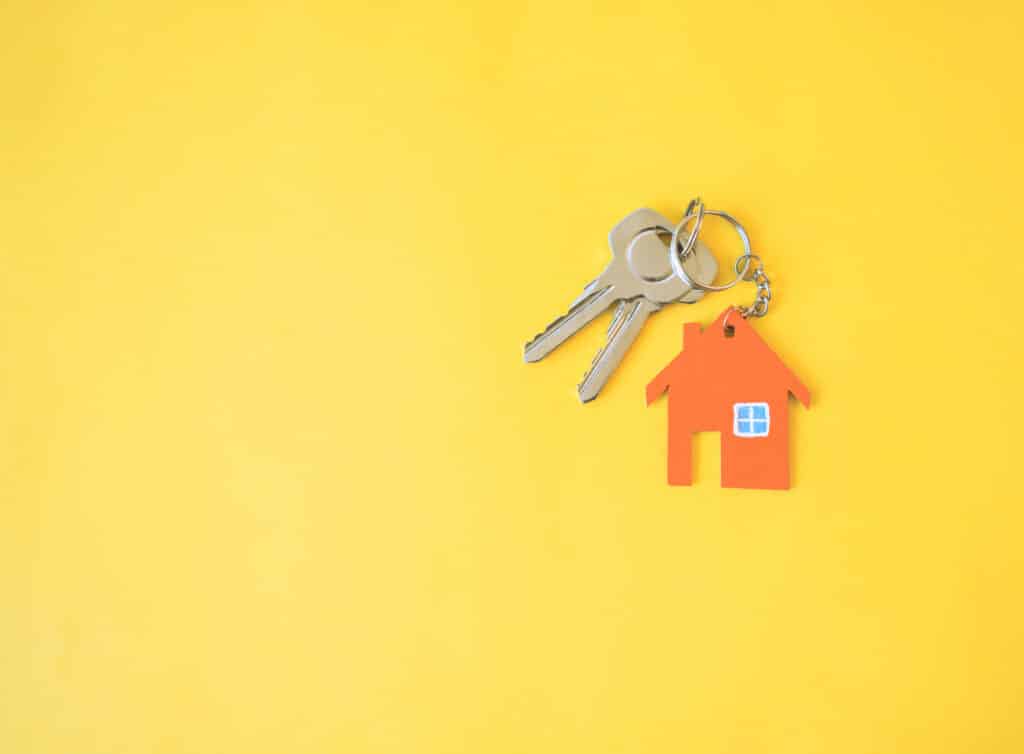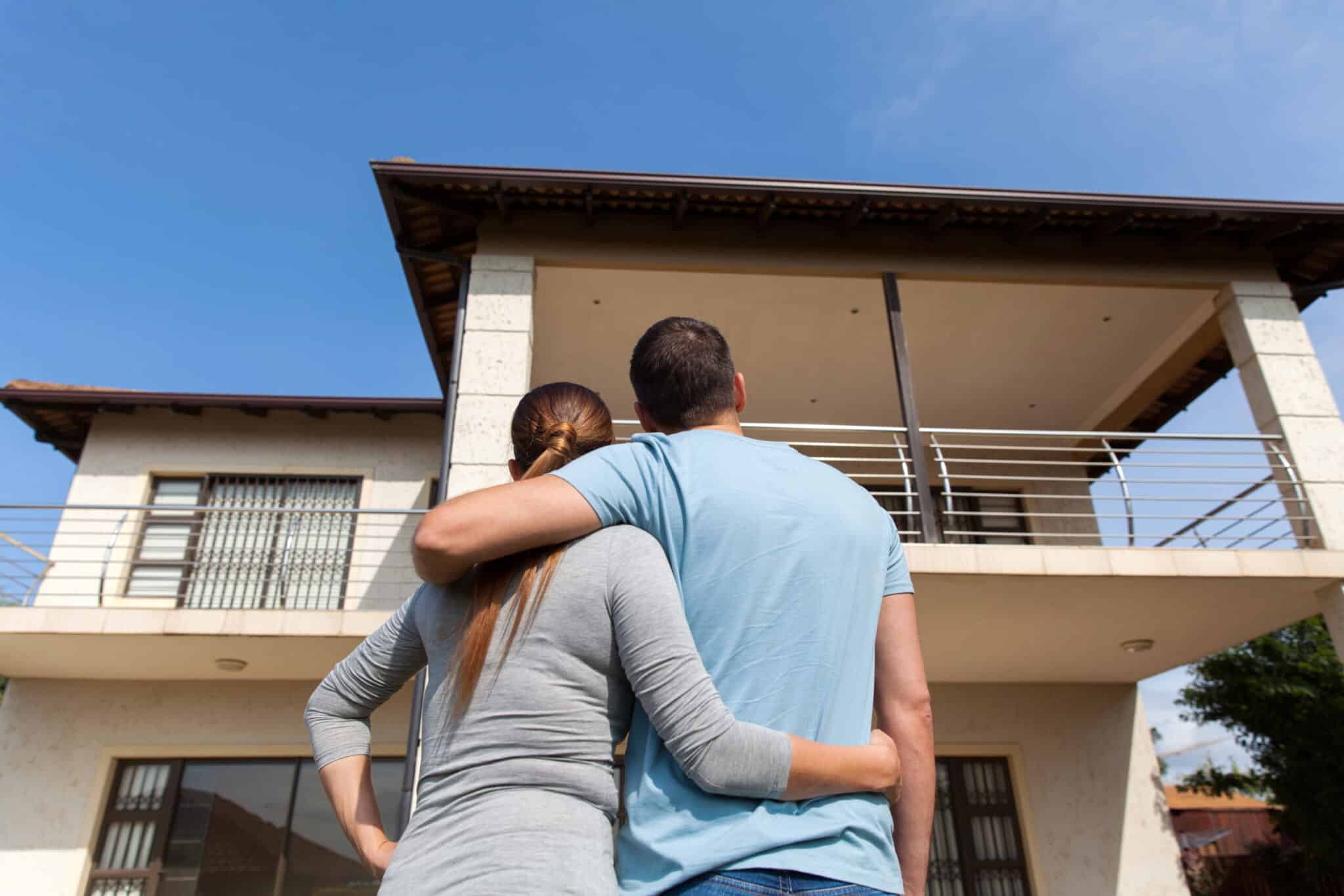Homeownership can be a life-changing way to create personal security and collect assets if done wisely.
However, it comes with a host of risks and can be a bit of a gamble if you don’t know which red flags to look out for.
Having spent over a decade in the real estate market, I’ve grown to understand the more subtle necessities of discernment to maintain when purchasing a house — especially for the first time.
Once you have an idea of how to gauge a house’s value based on its bones, you’ll have much better luck finding a home that will work for your needs and not cause problems.
Regardless of whether you’re a first-time buyer, an Airbnb host, a house flipper, or someone who just hopes to own a house someday — knowing how to determine if a house is worth it is an invaluable life skill.
Note: if you’re about to buy a house, there are other considerations you should have beyond this list, including the financial responsibility of home ownership. Check out this article to make sure you’re ready!
With all that being said, here’s my guide to buying a house in 2023.
There are two parts to this process: assessing the outside of the house (setting & condition), and the inside of the house (quality of building). This guide is organized as such.
Let’s get started!

Things to Look for Outside the Home When Buying a House
Safe Neighborhood
One of the most important and immediate things to check out when considering a potential house is the neighborhood.
Regardless of your living situation – from single dweller to raising a brood of younglings – guaranteeing that you feel safe and secure in the comfort of your own home is essential.
Sometimes, there are obvious signs that a neighborhood might not be the safest place to live — boarded-up windows, empty streets, littered sidewalks.
Still, it’s important to conduct fastidious research even if you think a neighborhood looks safe. Crime and dangerous situations often lurk in even the most idyllic suburban landscapes.
There are certain questions worth researching:
- What is the statistical crime rate?
- What are the local amenities?
- Are there other houses around that are in good condition?
As disheartening as this is, make sure you check local sex offender registry databases on both national and state levels. These databases contain information about all of the registered sex offenders around where you’re looking to buy a home — including the severity of their crime.
You can also utilize crime mapping services. These services use police reports to keep constantly updated on crime happening in any given area — you can even search by address.
Walkability (Optional)
If you’re looking to buy land in a rural area, this probably won’t apply to you. However, if you’re open to different locales, consider buying a home in a walkable area.
Not only will you save tremendous amounts of money on gas and cut down on carbon emissions — walkable neighborhoods also often contain more of a sense of community than atomized suburban sprawls (but if that’s your thing, go for it!).
If you’re looking to move to a state you’re not very familiar with, it can be really helpful to contact top realtors in your area for neighborhood recommendations. You can do this through a real estate agent directory.
For example, if you’re looking to move to Connecticut, but aren’t sure which towns are walkable, you can access a statewide Connecticut realtors list to gain a better understanding of different areas.
Proximity to Restaurants, Shopping, and Leisure Activities
Following up on the walkability factor — the ability to walk anywhere only matters if there are enjoyable neighborhood features nearby.
Picture this: a Saturday off work. You’re woken up earlier than you’d like by your dog begging to go outside and enjoy the nice weather. Realizing your exhaustion, you start craving a nice, decadent coffee to relax into your day.
And what’s just a quarter-mile down the street? A dog-friendly and locally-owned coffee shop with a gorgeous patio and stellar roasts.
Yeah, I know, that sounds more picturesque than what matches the bill of most neighborhoods. But still!
The ability to walk and try out cool spots adds a serious degree of spontaneity and quality to otherwise mundane tasks.
Even if you’re not looking for walkability, the proximity of any sort to spots you enjoy is going to drastically improve your quality of life.
Commute to Work/School
I can think of few financial mistakes as disappointing as buying a home only to end up wasting boatloads of money and time commuting from said home.
Think of where you spend most of your time outside of the home, and choose your neighborhood from there.
That way, going to work or school won’t have the added chore of an hour-long commute.
Unless you’re someone who enjoys your alone time in the car before and after your obligations, save yourself the traffic and gas.
School District The Home Is In
If you’re looking to raise a family in this new home of yours, it’s worth researching the schools in the area to ensure your kids can get top-notch education without districting hassles.
Most towns and neighborhoods offer public school district databases that you can access from anywhere.
Look into the specific offerings of each school from a better view, as well.
Local real estate agents from most cities are often well-acquainted with school districts and can help you narrow down options according to your family’s needs. The fastest way to get in contact is through local real estate directories.
So, following on our Connecticut example, if you decided to move to Hartford but aren’t sure in which district you should send your kids to school, you can check out a list of realtors in Hartford, CT. That way, you can get advice that’s still tailored to your home buying process.
Roof Condition
Roof condition is a far-too-frequently overlooked aspect of homebuying — which is a shame, since a new roof can run you a few thousand dollars, at least.
Even though you won’t be able to see the roof up close during your home viewing, there are some essential things you should know to get an idea of its quality.
For example, ask what the roof is made of and how old it is. From there, you can get an idea of how long those materials usually last, and therefore the lifespan of your potential roof.
Check to find out if the home’s current owner has a roof certification letter. These letters aren’t a guarantee, but they’ll contain information from a contractor regarding the roof’s lifespan in the near future.
Remember, you can always get a roof inspection if you’re not clear about the roof’s quality. Better to pay a bit extra for that than have to replace the roof soon after purchase.
Foundation Issues
Warped or protruding foundation walls are a telltale sign of underlying structural issues, which can be costly to rectify.
Check also for cracks in the home, including in the foundations, drywall, exterior, or ceiling.
Gaps above doors or windows can indicate poor structure and problems on the horizon. As can sunken stairs/porches and off-kilter slopes in the flooring.
Every home is subjected to some degree of settling, so a few cracks are inevitable. Just take note of them and run them by a home inspector to get the clearest idea of the home’s condition.
Neighborhood Noise
If you’re a city-type who doesn’t mind the sounds of hustle and bustle or traffic, don’t worry about this section.
However, if you’re looking for a peaceful reprieve from the outside world, make sure your neighborhood is as quiet as you want it to be.

Things to Look for Inside the Home When Buying a House
HVAC Age/Reliability
You do want to be comfortable in your house, right?
If so, don’t overlook the quality of a good HVAC system.
As you tour different houses, be sure to inquire about both the type and age of their heating and cooling systems.
It might also be helpful for you to ask if there are any maintenance records available for review.
HVAC issues don’t usually last more than 10-25 years and can cost a few thousand to replace depending on the type of system. Don’t expect that to be covered by the home warranty.
Plumbing Issues
If you’re not well-versed in the realm of plumbing, it can be easy to become overwhelmed and make a mistake.
However, there are three main factors to look out for in your potential home’s plumbing system: sewer lines, toilets, and water heaters.
If you’re looking at an older home, consider a sewer inspection to make sure the system is in order. Also consider purchasing homeowners insurance to cover sewer line problems, as these can get extremely costly.
Be wary of discoloration and leaks in the toilet — make sure to give it a test flush during the inspection! Same deal for sinks and showers.
Check the installation date of the home’s water heater to make sure it’s only over 15 years old — if it is, it’ll need replacing soon.
Water Damage or Mold
If left untreated, water leakage or damage can cause a multitude of issues, from structural harm to mold and rot. Be especially wary of this in basements.
If you notice musty odors around the home as you tour or moist marks on floors or ceilings, it could be indicative of water damage that needs your attention.
Consider involving an experienced home inspector who can provide insight into the severity at hand.
Mold is a serious health hazard and certainly not something you want to have in your new home.
Luckily, there are removal and treatment options that the homeowner should engage in before selling it. Negotiations are always an option.
Functioning Appliances
Don’t get swept up by how a home’s appliances look — they need to work.
When considering a home purchase, don’t neglect to check that the appliances included in the package – dishwashers, refrigerators, washers, dryers, and even microwaves – are still functioning.
Ensure you’re getting a reliable deal by confirming they all work properly.
Air Conditioning
There’s an important AC factor to check in these days: is your potential home still using R-22 refrigerant?
Homes with HVAC systems that use R-22 may still be utilizing the substance, but it became illegal in 2020.
As a result, a regular supply of R-22 is difficult and illegal to acquire, so you’d need to purchase a new HVAC system.
To ensure that you can keep your home at a comfortable temperature, replacing or retrofitting your system with an eco-friendly type of refrigerant should be taken into consideration before making any decisions regarding purchase and installation.
If uncertain about what kind of system works best for you, have a certified technician inspect the current setup.
Open Floor Plan (Optional)
Open floor plans are known for their ability to create a sense of spaciousness while simultaneously fostering collaboration and interaction amongst family members– something worth considering when buying a new home.
If you want an open floor plan, there are a few things to consider.
First, measure the doors and hallways in the house to make sure that everything is up to spec. You don’t want any surprises when it comes time for furniture placement.
Second, think about how much natural light your potential home receives – this will play a large role in the ambiance of the space.
Lastly, be mindful of what type of sound insulation is provided by walls and ceilings if you’re looking for privacy in certain areas or rooms.

Red Flags to Avoid When Buying a Home
A house is the biggest investment most people will make in their entire lives. To make good on that investment, there are some key red flags to look out for when buying a house:
- Air spaces around doors and windows indicate that the framing has shifted and the house’s foundation may be weak
- Moldy smells can indicate toxins that will do damage to respiratory systems
- Signs of termites, like feces or cracks in baseboards
- Water stains or saggy ceilings suggest a leaky roof — as does spot painting
- Additions to the house may not meet building codes
- Lots of homes popping up in the market in the area — this could indicate an increasing crime rate or an incoming landfill
- Aged HVAC system
- Curled shingles

Pro Tips When Buying a Home
Stake Out the Neighborhood
Before committing, it’s important to get a feel for the neighborhood and its surrounding area. What kind of people live there? What type of businesses are nearby? What is the crime rate like?
Doing your research ahead of time can give you a better idea of what to expect. Drive around the area for yourself and check out local attractions, restaurants, public services, and other amenities.
You may even want to speak with some locals to gain a better understanding of what living in the neighborhood would be like. Doing so will help ensure that you make an informed decision while house hunting.
Talk to the Neighbors
A home is more than just four walls and a roof. It’s also the people who live near you that can make or break your experience in the area.
It’s worth taking the time to get to know your potential neighbors, as their presence alone can affect the price of your home. A little effort into befriending them can go a long way towards assuring that you have a pleasant living experience in your new home.
Plus, they may even be able to give you some insider tips about the neighborhood that you couldn’t get anywhere else.
Research Safety Online
Although many of the above tips can help you learn more about your potential neighborhood, one of the most important aspects of researching a home is safety.
It’s essential to check online for crime rates, potential dangers, and other risks associated with the area before buying a house.
This will give you an idea of what kind of environment you’re stepping into so that you don’t end up in an unsafe situation.
Don’t neglect to do your research – it could save you from making a costly mistake down the line.
Conclusion
You’ve got the money saved up and you’re ready to buy a house: congratulations.
Buying a house is an exciting decision.
As you’ve seen, it’s important to consider all relevant factors before making a financial commitment.
I hope these pro tips and red flags gave you a clear-cut idea of what to look out for when you’re house hunting.
My last pro tip: don’t get swindled!
Good luck and enjoy the search. You’re already well on your way to finding the perfect place!

Frequently Asked Questions
The three most important things to consider when buying a house are location, price, and the home’s condition. A purchase that’s sore in any of these areas will likely cause more problems than it solves.
Five solid considerations affect home buying, whether you like it or not! These are your credit score, your budget, your down payment options, the amount you can borrow, and where you want to live.
The #1 thing that real estate agents recommend being conscious of when buying a home is location.
1. The house’s location
2. The size of the property
3. # of bathrooms
4. # of bedrooms
5. Common areas layout
6. Condition of home appliances
7. House’s age
8. House’s price
9. Neighborhood amenities
10. Why is the house on the market?
Make sure your home’s appliances, HVAC, roofing, and foundation are in good condition. Otherwise, you might end up spending thousands extra on repairs.
When asking questions during a viewing, try to find out the house’s background — how old is it? Why is it being sold? Are there any problems or disclosures?
A home inspector can also help you gauge the home’s quality.


